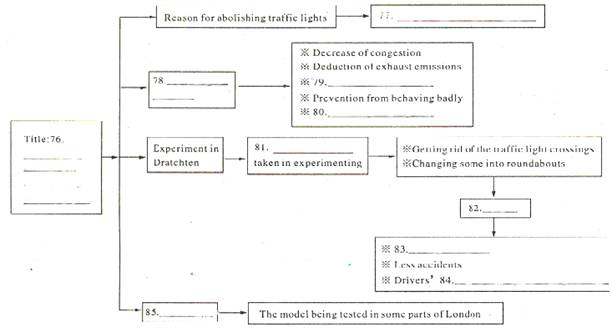题目内容
There are three separate sources of danger in supplying energy by nuclear power(原子能).
First, the radioactive material must travel from its place of production to the power station. Although the power stations themselves are strongly built, the containers used for the transport of the materials are not. Normally, only two methods of transport are in use, namely road or rail. Unfortunately, both of these may have an effect on the general public, since they are sure to pass near, or even through, heavily populated areas.
Second, there is the problem of waste. All nuclear power stations produce wastes that in most cases will remain radioactive for thousands of years. It is impossible to make these wastes nonradioactive, and so they must be stored in one of the inconvenient ways that scientists have invented. For example, they may be buried under the ground, or dropped into deserted mines, or sunk in the sea. However, these methods do not solve the problem, since an earthquake could easily break the containers.
Third, there may occur the danger of a leak(泄漏) or an explosion at the power station. As with the other two dangers, this is not very likely, so it does not provide a serious objection to the nuclear program. However, it can happen.Separately, these three types of dangers are not a great cause for worry. Taken together, though, the probability of disaster(灾难) is extremely high.
1.Which of the following is FALSE?
A.It is possible that a leak or an explosion occurs at a power station.
B.It is unusual for radioactive materials to be transported across land.
C.The containers are likely to be broken by an earthquake.
D.Nuclear wastes remain dangerous in most cases for many years.
2.The author thinks that the ways to store nuclear wastes are ________.
A.easy B.impossible C.reasonable D.ineffective
3.What do we learn from the last paragraph?
A.The power station is a safe place.
B.The dangers of nuclear energy can be prevented.
C.The general public are strongly against the nuclear program.
By itself, none of the three dangers is very likely to cause much worry.
4.What is this passage about?
A.Uses of nuclear power. B.Dangers from nuclear power.
C.Public anger at nuclear power. D.Accidents caused by nuclear power.
1----4 BDDB
解析:
1.这是一道细节题。A选项是第四段表达的观点;C选项在第三段中“…an earthquake could easily break the containers.”有印证;D选项在第三段“…remain radioactive for thousands of years.”可以找到;而B选项可从第二段第一句话知放射性物质必须从它的生产地运往核电厂,所以,放射性物质的运输是正常的事,而不是非正常的事。答案为B。
2.这是一道细节题。作者在第三段讲述了科学家采用的几种储存核废料方法:把核废料入
地下,扔进废弃的矿井或沉入大海,但是这样并没有解决问题,因为地震可能毁坏容器。作者认为这些方法是不起作用的。答案为D。
3.这是一道句意理解题。从文章最后一句可看出作者认为这三种危险单独存在并不引起人
们过于担心,然而三种危险同时发生那就可能是一场极大的灾难。答案为D。
4. 这是一道主旨题。全文讲述了生产原子能工程中存在的三种危险:运输、储存和泄漏。答案为B。

